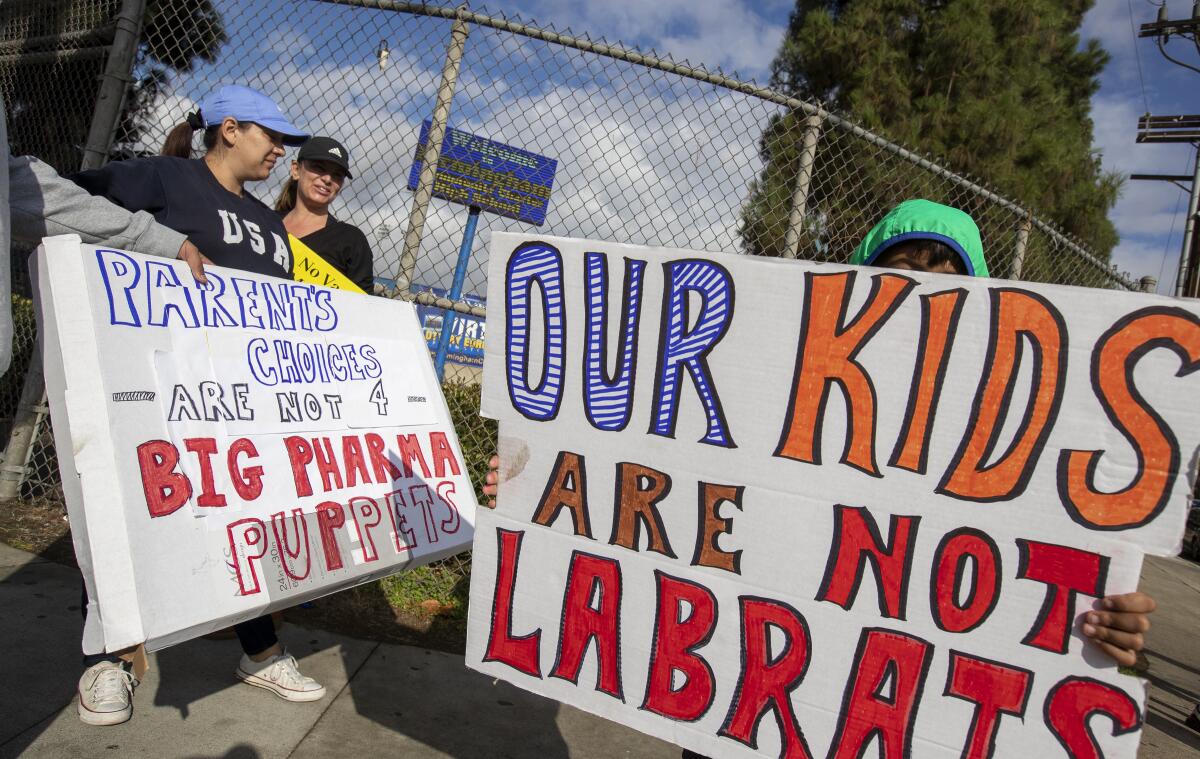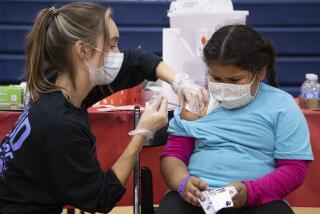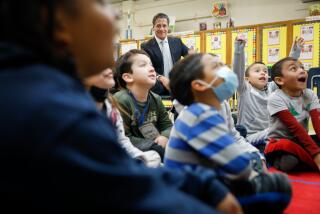Editorial: How to handle an anti-vaccine ‘stay-at-home’ protest against schools

- Share via
Some California parents kept their kids out of classrooms Monday as part of a statewide protest against the COVID-19 vaccine mandate for schools that Gov. Gavin Newsom has promised.
The very earliest it could go into effect is in January, and only after full approval by the U.S. Food and Drug Administration for each age group. Even then, it would allow parents to opt out through a personal belief exemption that Newsom shouldn’t have allowed and that really ought to be eliminated. Yet the mandate has generated a level of anxiety and anger among certain parents — very few of them, thankfully — that they’re willing to engage in a protest that isn’t going to achieve anything more constructive than letting them blow off steam.
Their idea: They’ll make the schools lose a day of state funding for their children, hitting districts where it hurts.
The federal government, the state and schools themselves have spent extraordinary amounts of time, effort and money to return students to classrooms while keeping everyone as safe as possible. Students have lost out on too much classroom time; while losing one more day isn’t going to undo a child’s education, symbolically this is a sad move.
As for schools losing funding, the number of parents who participated wasn’t large enough to even be palpable — at most a few thousand out of about 6 million students. Even so, the state should be sure to fund schools to their full average attendance level for Monday. Corrosive behavior shouldn’t be rewarded.
It’s understandable that some parents fear these new vaccines, or just don’t like being told what to do with their own children’s medical care. And protest is an honorable way to express their viewpoints. But they can protest in ways that don’t harm schools or send a message to kids that skipping school is OK. Schools should treat those missing kids as they would any other unexcused absence, handing them their makeup assignments and not cutting them extra slack.
What we all — parents, school staff and the general public — want is for students to be able to attend regular classes in the safest and most normal way possible. And that’s best achieved through vaccination first and masks second, at least for the moment.
The excuse that children can skip inoculation because they rarely die of COVID-19 is threadbare. It’s true that children aren’t more likely to die of the Delta variant than the older form of the coronavirus, but because it is so much more easily transmitted, more children are infected and more of them require hospitalization. Science might not know all the possible long-term effects of the new vaccines, though there is no evidence of long-range harm. But we do know that COVID-19 can have lasting and serious effects on those who must be hospitalized.
Individual parents might be willing to take that risk. The problem is that their unvaccinated children put others at risk: students, the families of classmates and the communities in which they all live.
That has been the philosophy behind mandatory school vaccinations for years. It’s behind existing law that requires 10 vaccines to be administered to students before they can attend school, with no nonmedical exemptions. And it should be the rule for vaccination against a pandemic that could have been effectively blocked earlier if all the people qualified to be vaccinated had done so.
More to Read
A cure for the common opinion
Get thought-provoking perspectives with our weekly newsletter.
You may occasionally receive promotional content from the Los Angeles Times.









